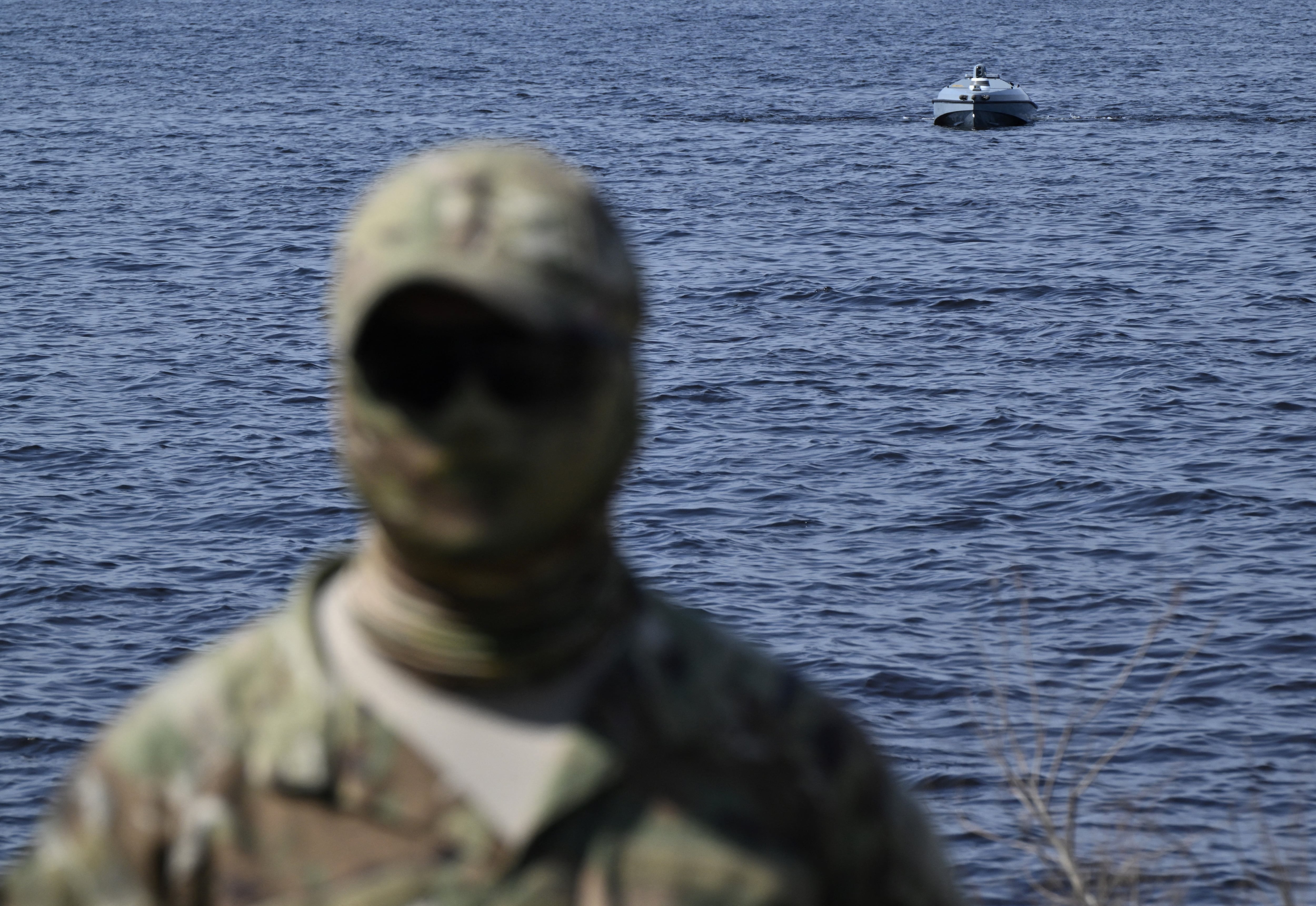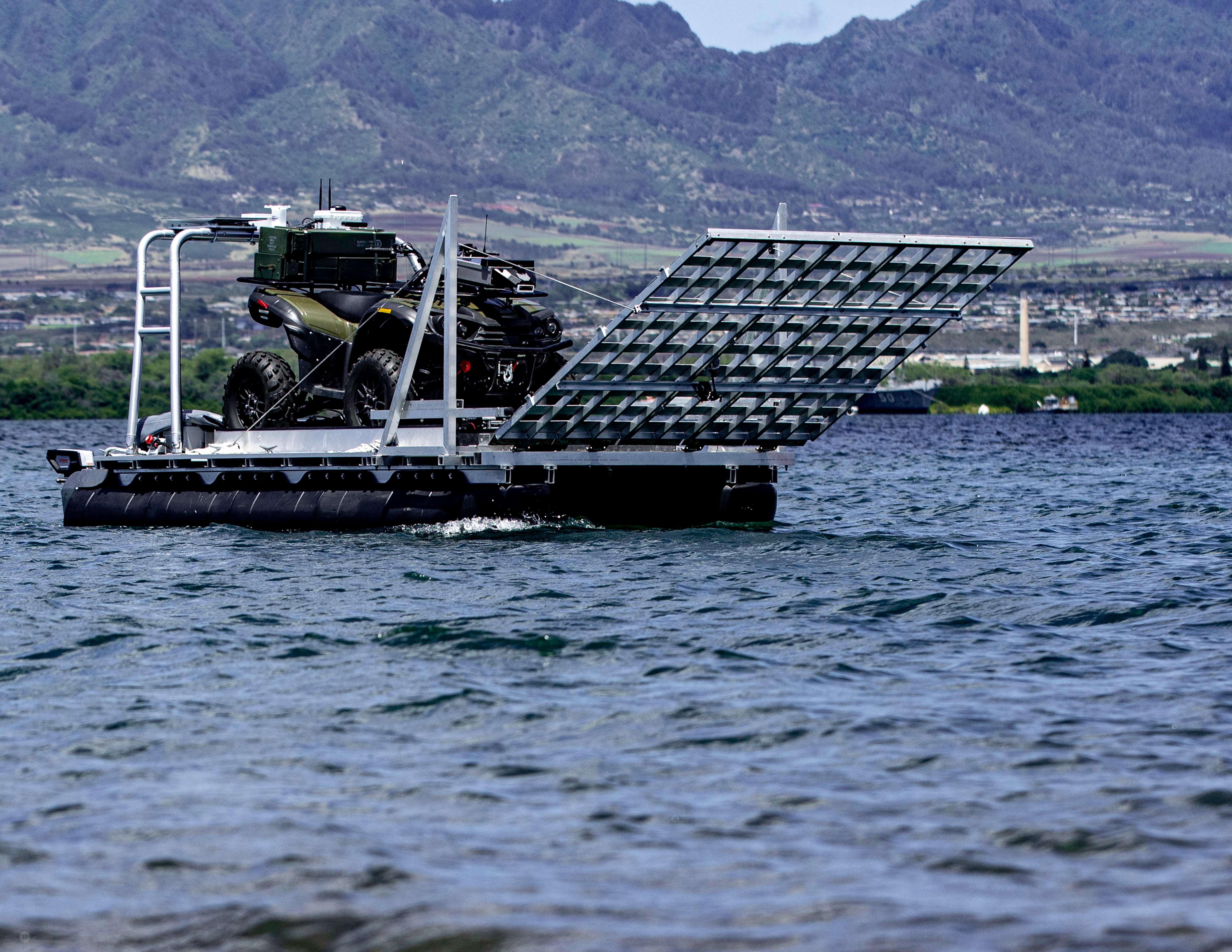LOMPOC, Calif. — With 10 freshly-launched missile tracking and communication satellites now in space — and another 18 in line for a June flight — the Space Development agency is preparing to support a slew of exercises over the next year that will showcase the satellites’ capabilities and give military users a chance to try them out.
A SpaceX Falcon 9 rocket launched SDA’s first batch of satellites, dubbed Tranche 0, April 2 from Vandenberg Space Force Base in California. The mission included eight transport spacecraft built by York Space Systems that will use optical links to transfer data from space-based sensors to users on the ground. It also featured two SpaceX-built satellites that will detect and track ballistic and hypersonic missiles, which can travel and maneuver at Mach 5 speeds.
Providing opportunities for military users to “get their feet wet” and begin training with SDA satellites is the primary reason for launching this first mission, according to Tranche 0 program director Mike Eppolito. The agency will begin delivering operational capability with Tranche 1 in fiscal 2024 and expects to provide global coverage by FY26 with Tranche 2.
“The satellites that we have up there, the intent there is to get them into the warfighters’ hands so they can start developing their techniques, to give them the time to go through the training and to allow them to start thinking about how they would use the larger constellation once we have that on orbit,” he told reporters during a March 30 briefing.
The spacecraft are in high demand from the military services, SDA Director Derek Tournear said during a March 31 interview prior to launch. The services and the Missile Defense Agency will use data provided from the tactical communication nodes and tracking sensors to improve targeting and intercept missiles. Leaders from the services sit on a warfighter council that approves requirements for the agency, an arrangement that helps ensure SDA is prioritizing capabilities that are needed in the field.

Following a series of routine checks meant to prepare the sensors and other systems for operations — a process occurs after the satellites are launched and usually takes about two months — the first demonstrations will occur at Eglin Air Force Base in Florida. There, three of the transport satellites equipped with Link 16 terminals will showcase their ability to communicate with Air Force aircraft.
Link 16 is a secure communications tool used by the U.S. and many international allies. SDA will use the system to push sensor data to fighter aircraft and other weapon systems.
Before SDA can demonstrate the capability, it must get approval from the Federal Aviation Administration to operate the transport satellites over Florida’s Gulf Coast. The process has taken longer than anticipated, but Tournear said expects everything to be in place by the time the satellites finish their check-out phase.
Along with the Eglin tests this summer, SDA planned to participate in an annual joint U.S Indo-Pacific Command training exercise called Northern Edge. However, Tournear said the agency opted out of this year’s event due to concerns over FAA certification.
While the exercise would have been good for visibility due to Northern Edge’s prominence, he said it’s not a major setback for the agency.
“It’s not like, ‘Well, you missed that one and now you’re kind of out of it,’” Tournear said. “There’s a lot of these smaller events, they just don’t get as much publicity or visibility within the department as Northern Edge. But as far as getting data to the warfighter and letting them actually use it, they’re just as useful.”
Those smaller opportunities include exercises the Marine Corps is conducting in the INDOPACOM region later this summer. The agency is also working with the Army and Navy to integrate the satellites in upcoming Joint All-Domain Command and Control demonstrations where the services showcase the ability to connect systems across the land, air, space, sea and cyber domains. Military officials view SDA’s transport and tracking capabilities as the “backbone” of that future networked force.
The services hold large-scale JADC2 exercises — like the Navy’s Project Overmatch and the Army’s Project Convergence — as well as smaller test events with individual systems. Tournear said SDA plans to plug in at both levels.
While many of the early exercises will focus on the transport capability, SDA’s tracking satellites will start collecting data as soon as they have the opportunity, mostly following standard rocket launches or scanning “hot spots” on the Earth, like volcanoes, to calibrate their sensors, he said.
In the spring of 2024, the agency will conduct the first of its more formal tests, during which the spacecraft will demonstrate the ability to track a hypersonic missile. Tournear declined to provide details about what missiles would be involved in the tests.
Courtney Albon is C4ISRNET’s space and emerging technology reporter. She has covered the U.S. military since 2012, with a focus on the Air Force and Space Force. She has reported on some of the Defense Department’s most significant acquisition, budget and policy challenges.








